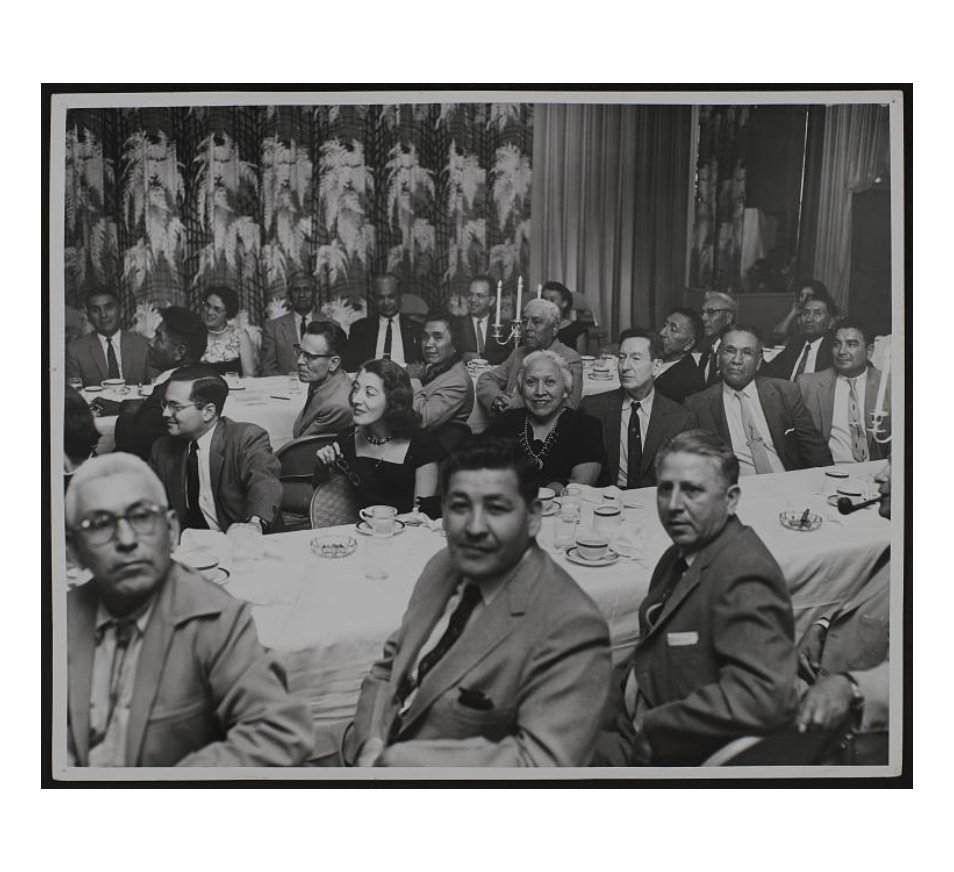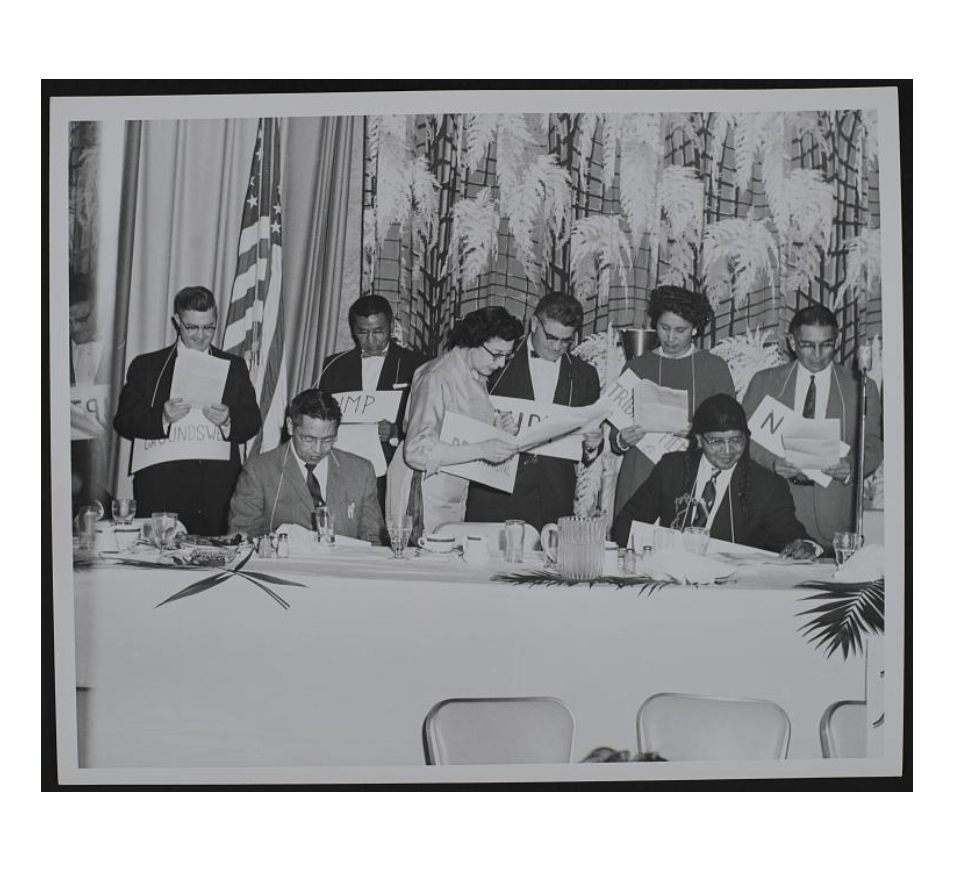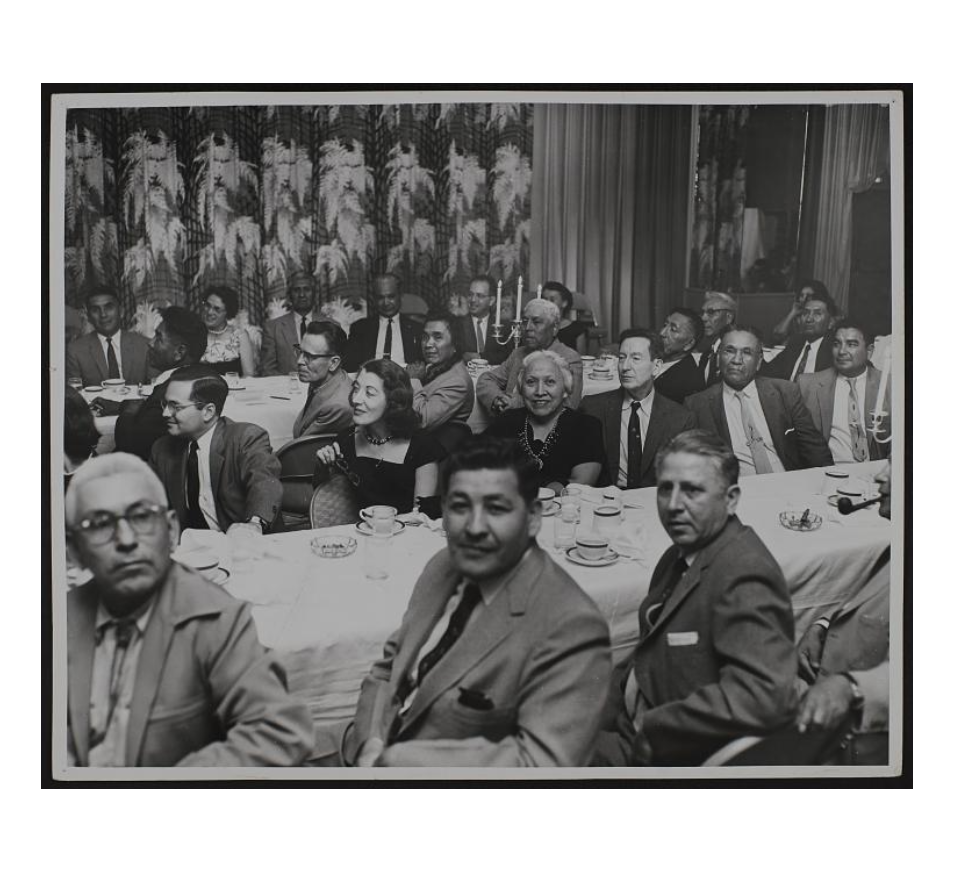

The Executive Council Winter Session (ECWS) brings together representatives from member tribes to Washington, DC, for the purpose of planning strategy for the coming year. Although the ECWS is required by the NCAI Constitution today, this wasn’t always the case. For the first 11 years of the organization’s existence, the Council did meet, but not as required by NCAI rules. It was not until a 1955 revision of the NCAI Constitution that the organization’s governing document was amended to specifically require this annual meeting. As for the timing of the meeting, it could be anytime ‘immediately’ following the Annual Conference. Further revisions brought us to where we are today, specifying that the meeting must be held in the first quarter of each year.
Before we delve into this year’s agenda, let’s take a look back in the archives at some of the ECWS meetings from years past. The first Executive Council Winter Session meeting for which we have a detailed archival record occurred in March 1959. This meeting was at the time “the biggest in the organization’s history” with 70 delegates in attendance. These delegates represented 30 Tribal Nations and came from 11 states. In addition, six attorneys assisted with analyzing legislation, court decisions, and rulings affecting Indian communities and property.
Taking center stage that year was a newly proposed federal Indian policy known as Senate Concurrent Resolution No. 12. This proposed legislation was designed to clarify a previous piece of legislation known as House Concurrent Resolution No. 108 (adopted in 1953), which called for immediate termination of the federal government’s responsibility to Tribal Nations.
NCAI delegates in attendance agreed that this new proposal, introduced by Senator James E. Murray (D-MT) and Senator Richard Neuberger (D-OR), was necessary as it would clearly counter the unjust practices of both the United States Public Health Service and the Bureau of Indian Affairs at the time. Both agencies denied any services to individual Indians unless they lived on trust land. NCAI President Joseph Garry (Coeur d’Alene Tribe) led the discussion and attendees debated this legislation all week throughout the session and ultimately concluded that the agencies’ actions were unlawful—they were withholding services they were legally required to provide. While not explicitly stated, the delegates viewed this as a form of termination. The new proposed legislation they supported called for the reinstatement of the education and health services to the affected individuals.
Delegates in 1959 also addressed other issues at the forefront of NCAI’s advocacy. They questioned the alarming delays in the settlement of claims cases. They scoffed at the ruling that claims settlements could not be awarded to claimant’s dependents. Considering how long the cases actually took, the question of dependents’ rights to the settlements was a valid one.
Some positive applause was given to the U.S. Public Health Service and the Bureau of Indian Affairs for the increased appropriations benefitting Tribal Nations, but delegates tempered their praise with the reality of wanton closures of schools and hospitals that denied educational and health services to many Indians—especially those who were unable to travel further distances to access those services. Increased funding could only go so far if it failed to reach the people it was intended to assist!
Another timely issue on the forefront of the agenda was Alaska statehood legislation. Delegates rallied around two realities—the status of Alaska Natives would be altered when statehood became a reality, and the State would unfairly have first claim to land. The following discussions at the meeting centered around how to best protect the land rights of Alaska Natives. NCAI vowed to ensure adequate legal protection for the rights of Alaska Natives to claim their ancestral lands for future generations.
Analysis of records from later ECWS meetings shows a consistent resolve. During the Executive Council Winter Session meeting held in January 1975, delegates reviewed resolutions and charted legislative activities for the upcoming year. Forty Tribal Nations attended and listened to reports on upcoming Bureau of Indian Affairs’ programs and activities, and reviewed statements on upcoming legislation and court cases.
However, it was the recently created Indian Policy Review Commission that dominated the meeting. Established in 1975 by the U.S. Congress with the mandate to comprehensively review the relationship between Indians and the federal government, the Commission established 11 Task Forces to study specific areas of importance. As a result of the ECWS discussions, many NCAI members were identified and appointed to those Task Forces. They then contributed to the Commission’s final policy recommendation report.
Additionally, the case of whether individual Indians leasing reservation lands were subject to taxation also led to a heated conversation that year. Those individuals who were leasing land on the Fort Peck and Cheyenne River reservations for cattle ranching suddenly found themselves subject to taxation by the Internal Revenue Service.
NCAI’s position was that the lands were not taxable and therefore those levies should not apply to leaseholders. Following the meeting, the NCAI Bulletin featured several follow-up articles that provided greater understanding of this complex issue and that continued the conversation at subsequent meetings.
Each Executive Council Winter Session meeting’s purpose was the same—to gather at an opportune time in the new year to set the course for policy and advocacy for what was to come. While the settings, and certainly the times, have changed, some things have remained the same: the issues that have been discussed—issues of sovereignty, self-determination, governance, and protection of individual and tribal rights—have been woven into every Executive Council Winter Session meeting from the start.


